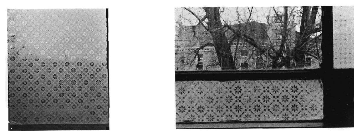Articles/Essays – Volume 02, No. 2
Racial Integration and the Church — A Comparative Note
The Mormon position on certain racial issues is being given attention in the popular press and has become a matter of concern to various segments of the whole nation—Mormon and non-Mormon alike. There is a possibility that the issue may get involved in political campaigns at the national level. The concern centers around the fact that in the Mormon Church the Negro is prohibited full participation, since racial identification is taken into account in decisions as to who can hold the priesthood. In this setting, it is of more than just passing interest to note the findings of a study done in New Zealand with reference to racial integration in religious activities there.
The study was done by Dr. Hans Mol for the National Council of Churches in New Zealand and reported in his recent book, Religion and Race in New Zealand. Methodological limitations in the study prohibit accepting the findings as rigidly determined facts, but the general conclusions are sufficiently substantiated to merit giving them serious consideration.
The study concerned the entire religious configuration in New Zealand. Here, however, we will report some of the findings concerning the Mormon Church. The pertinent conclusions are as follows:
(1) It was found that in New Zealand the clergymen who were Maori or who worked among Maoris were more inclined to favor separate Maori services and organizations. Mol indicates that each Anglican, Methodist, and Presbyterian clergyman studied indicated that this was true of his group. Roman Catholics were more favorable to integrated activities, but for various reasons separate activities were the usual pattern. Mol indicated, however, that
the only denomination for which this generalization was not true was the Church of Latter-day Saints. All church services are integrated in this case. It appears that the Mormons are successful both in maintain- ing their hold on the Maori and in maintaining their own way … . only Catholics to some extent and particularly the Mormons are capable of directing and instigating policies of integration.
(2) In commenting upon the continued increase in Mormon membership, Mol concludes that the increase can be traced partly to the functional social organization of the Church. He says:
It has a neat internal system of checks and balances for its member- ship. Its demands of tithing, church-going, abstinence of stimulants are commensurate to what it supplies to its membership: belonging to a cohesive group, where equality is practiced, where performance is re- warded (hierarchy of officers and committees), where non-conformity is visible and checked (visitation), where recreation is well provided. The whole system is then tightened by the institutional dedication and example of the non-salaried missionaries and the insistence on Christian love as the integrating element. Because of its demands and its essential non-Maoriness, it was thought that the Mormons would have a large turnover of membership. However, this has not proved so.
(3) Of the New Zealand churches, the Mormon group was found to have the highest percent of Maori attendance in integrated services, in both urban and rural areas. With reference to Church attendance, Mol quotes another study as follows:
Maoris in Auckland preferred to attend services conducted in Maori by Maori ministers and to belong to Maori branches of church organi- zations. Apart from members of the Mormon Church, very few attend their local churches with any regularity.
With reference to integration in New Zealand, Mol concludes as follows:
The Mormons are the most successful of all churches in the implementation of a policy of integration. Although in some areas nearly all its members are Maori (in such a situation one cannot very well speak of a successful policy of integration) the fact that 50% of its members go to services every Sunday which have many non-Maori overtones, and feel at home in this environment, is certainly an achievement of the first order. . . .
In conclusion it appears here as before that diversity of cultural or class standards tends to have an inhibitive effect on common worship and common participation in Protestant churches, but that this is much less true for Catholicism and untrue for the Church of Latter- day Saints.
The New Zealand situation and the United States situation are to be sure very different in many respects, including the exact racial composition of each. However, the New Zealand experience indicates that the Church has the mechanism and the techniques to establish complete racial integration.


 Back to full Issue
Back to full Issue

